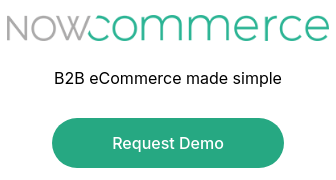Order management is a crucial part of any business. Without it, orders get lost, delayed as they pass between departments, or suffer from excessive transcription errors. For years, it has been typical for small companies just getting started to develop their own systems for preventing these problems.
Many homegrown systems are put together piecemeal as businesses try to keep up with changing times. The real solution is to invest in a well-built, polished order management system from a development firm specializing in such programs. This will ensure that the solution meets current needs and continues to meet your needs as you grow.
 Here are some of the key capabilities to look for:
Here are some of the key capabilities to look for:
1. Interdepartmental Access
One of the biggest problems with paper—and email-based systems is the need to send orders from one department to the next manually. Orders can be lost, which causes unacceptable delays in the fulfillment process. If an order needs to be manually transcribed at each step, it also introduces opportunities for errors. A sound, modern order management system eliminates these issues. With this system, an order only has to be entered once. The company's departments can then see the orders and their statuses by checking their computers.
2. Access from Beyond Your Company's Walls
Outside sales reps can't be helped by a system they can't use once they're on the road. Working around this by having them call in or email orders is clunky and old-fashioned, slowing down the order process. Replacing old-style systems will allow your reps to add orders directly to the system wherever they can get an internet connection. This will impress their customers, eliminate the need to wait on hold while customers get impatient and reduce the chance of errors.
3. Allow Customers to Place Their Own Orders
Sending a sales rep out is great when a customer is new. However, once a business has dealt with you, its purchasing agent will likely want to place repeat orders of known products. In this case, he or she won't want to have to wait for a rep to come out or sit and chat. Instead, the purchaser will want to place an order quickly and be on to the next task of the day.
A modern order management system includes a B2B eCommerce portal to make it easy for your customers to do this. This portal works much like its B2C counterpart but with specialized B2B functions added. Such functions include setting up client-based pricing, handling purchase orders, dealing with credit accounts, and other things typical of the wholesale business.
4. Works with Existing Company Software
One of the biggest obstacles to upgrading is the rarity of solutions that work with what companies already have. You can find one that works perfectly with your accounting software, like QuickBooks. If it works with QuickBooks, installing an entirely new database is unnecessary to get things going. Because of this, the expense and tech support needed to modernize is minimal.
5. Easy to Learn
Training employees to use a new system is easy when the system is laid out intuitively. An intuitive user interface can be implemented quickly. Of course, it's also naturally easier to learn a single system than memorize a collection of disparate order-taking methods.
Find a company without long-term contracts; there's no reason not to switch. It won't be long before your company reaps the benefits of a modern, unified system that can pay for itself through increased efficiency and better customer satisfaction.

